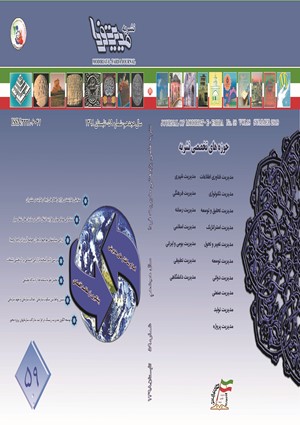ارائه مدلی برای مشتریحمایتگر (مشتریان مواد شوینده و بهداشتی در شهر تهران)
الموضوعات :میرزاحسن حسینی 1 , محمد محمودی میمند 2 , علی اکبر جوکار 3 , فرزانه سادات حسینی 4
1 - دانشگاه پیام نور
2 - دانشگاه پیام نور
3 -
4 - دانشگاه پیام نور
الکلمات المفتاحية: انگیزانندههای درونی مشتری بازاریابی شفاهی قضاوتهای مشتری مشتری حمایتگر,
ملخص المقالة :
از آنجا که رسانههای اجتماعی، روز به روز گویاتر میشوند، مصرفکنندگان هم میتوانند هر روز بیشازپیش بر سایر مصرفکنندگان اثر گذاشته و آنها را ازدیدگاهها و تجربیات خود آگاه سازند. با تاثیرگذاری بر این طیف گسترده، مشتریان میتوانند تلاشهای بازاریابی را متوقف، کنترل یا مدیریت کنند، این نشان از قدرت گرفتن مشتریان در بازار دارد. یکی از انواع مشتریان قدرتمند که میتواند به کمک سازمان برخیزد و بدون هیچ چشمداشتی از سازمان حمایت کند، مشتری حمایتگر است. هدف این پژوهش بررسی پیشنیازهای مشتریحمایتگر میباشد. جامعه آماری این پژوهش مصرفکنندگان مواد شوینده و بهداشتی در شهر تهران در نظر گرفته شدهاست، و ابزار جمعآوری دادهها پرسشنامه میباشد. از روش نمونهگیری احتمالی برای انتخاب نمونه آماری استفاده شده است که در مجموع 336 مصرفکننده دادههای این پژوهش را تامین نمودند. برای تجزیه و تحلیل دادهها و آزمون فرضیههای تحقیق از روش مدلیابی معادلات ساختاری استفاده شدهاست. نتایج حاصل از پژوهش گویای این امر است که هر دو بعد قضاوتهای مشتری و انگیزانندههای درونی مشتری و تمامی عوامل آنها دارای تاثیرمثبت و معنادار برروی مشتری حمایتگر دارند.


